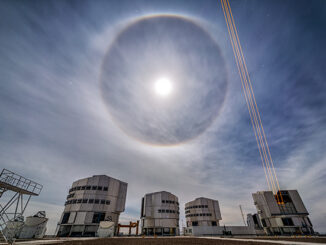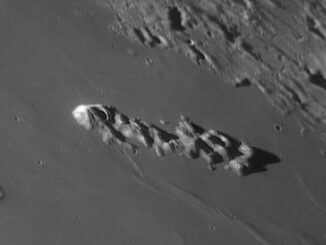
I’m frequently surprised by how many astronomers agonise over the minutiae of their new telescope’s specification, only to use it with basic eyepieces (sometimes called oculars) that they may have owned for decades. Every observer should regard their eyepieces as vital links in the instrument’s optical chain that are every bit as important as the finest objective lens or mirror, so we need to adopt a holistic attitude to the equipment we use to get the most out of it.
But before we offer some suggestions from the mind-boggling range of eyepieces available, it’s important that we are familiar with the optical terms used to describe and define them as well as our telescopes. If you’re confused about any of the fundamentals, I invite you to read our introductory optics guide in Absolute Beginners in the December 2017 issue of AN.
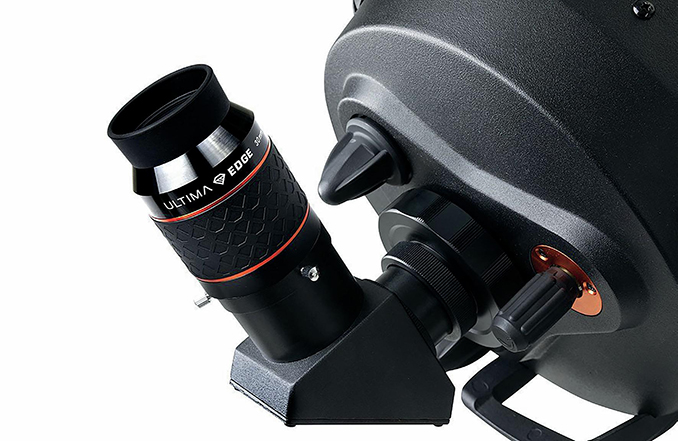
Fast or slow telescope?
Everyone should know the focal ratio of their telescope, which is its focal length divided by the aperture. Hence a refracting telescope with a 120mm objective lens and a focal length of 900mm has a focal ratio of 7.5, usually written f/7.5. Instruments shorter than about f/6 are traditionally deemed ‘fast’ and anything longer is generally reckoned as ‘slow’, which are terms that are a hold-over from the days of categorising instruments by their photographic prowess.
Light from a star gathered by a telescope’s lens or mirror converges to a point that may be envisioned as the tip of a cone. Faster telescopes produce steeper-sided light cones than slower ones. The former places greater demands on the performance of simpler eyepiece designs because individual light rays arrive from widely differing angles, which is why such oculars often display so-called optical aberrations (often mistakenly called distortions). Eyepieces designed for fast telescopes have more lenses, called elements, to reduce optical aberrations.
Eyepiece sizes
Most eyepieces available today are designed with chromed barrels of either 31.75mm (1.25 inches) or 50.8mm (two inches) to push-fit focusers of the same internal diameter, although larger diameter eyepieces are appearing on the market. Some older eyepieces have 24.5mm (0.965-inch) barrels.
Focal length and magnification
Every eyepiece has a focal length, ranging from about 2mm to 50mm, which you will find engraved or printed on its cap. The magnification (sometimes called the power) of a telescope is the telescope’s focal length divided by the focal length of the eyepiece. For example, a 900mm focal-length refractor equipped with a 10mm focal-length eyepiece magnifies 90 times, written 90×. The maximum usable magnification on a night of good ‘seeing’ is about twice the telescope’s aperture in millimetres – 200× for a 100mm telescope. There is also a minimum usable magnification, explored in the ‘Exit pupil’ section below.
Apparent (and true) fields of view
Hold a typical eyepiece up to your eye in daylight (facing away from the Sun) and you will generally see a porthole-like view with a sharply defined edge known as the field stop, which is an internal diaphragm that lies at the focus of the eyepiece’s combination of lenses. The field stop is of a certain size to define the edge of the field of view, eliminate extraneous light that reduces image contrast, and to mask undesirable off-axis optical aberrations.
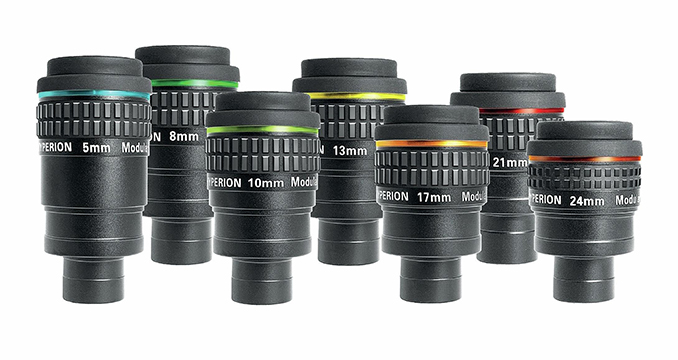
The field stop of a regular eyepiece has a fixed apparent angular size – anything from around 40 degrees up to around 110 degrees in the widest, immersive ‘space-walk’ designs. The latter require you to move your eye around the field of view to see the edge. The actual (or true) field of view of any given eyepiece is its apparent field divided by the magnification that it delivers.
For example, an 80-degree apparent field eyepiece delivering a magnification of 160× has a true field of view of 0.5 degrees (80 ÷ 160 = 0.5), coincidentally, the same angular size as the full Moon. Large apparent fields are particularly attractive to users of unmotorised mounts like Dobsonians because you don’t have to nudge the telescope so often to follow an object as it moves across the sky.
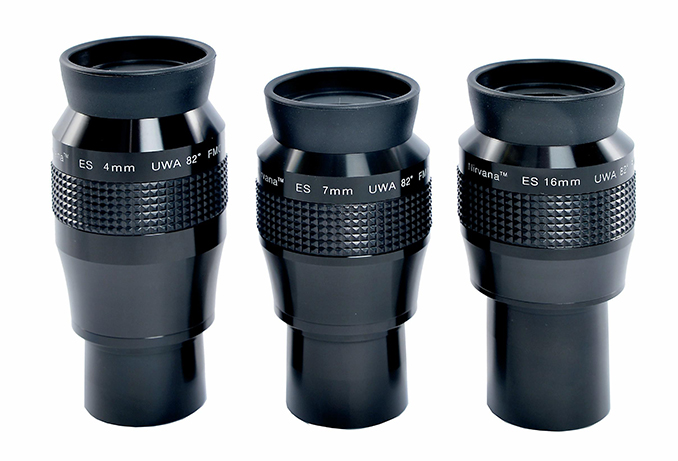
Exit Pupil
All of the light rays leaving the eyepiece converge in a small disc a short distance behind the ocular called the exit pupil. It’s where you need to place your eye if you wish to see the entire field of view. The eyepiece’s focal length divided by the telescopes f-ratio gives you the exit pupil’s diameter, which is larger at low powers. For example, a 30mm focal-length eyepiece in an f/5 telescope yields a 6mm exit pupil (30 ÷ 5 = 6).
Herein lies a problem: if the exit pupil exceeds that of the eye’s dilated pupil, then you are effectively wasting a large portion of your telescope’s carefully gathered light. The size of your eye’s dark-adapted pupil also reduces with age, from a maximum of around 7mm in your 20s, to about 6mm at the age of 50, shrinking to 5mm in your twilight years. Hence it pays to ensure that your lowest magnification eyepiece’s exit pupil never exceeds about 6mm.
Eye relief
The distance between the rear lens of the eyepiece and the exit pupil is called the eye relief. Eyepieces with a large eye relief are comfortable to use since you don’t need to press your eye so close to see the entire field of view, which is particularly important for those of us who have to wear spectacles to correct for conditions such as astigmatism. Here’s a tip: if you are merely long- or shortsighted, then you never need to wear your glasses at the telescope; just a twist of the focuser knob will sharpen the view.
Parfocal
It’s inconvenient if you have to refocus your telescope each time you change eyepieces to obtain a different magnification. Some manufacturers make a range of their eyepieces parfocal, so you don’t need to refocus when swapping one focal length for another.
Anti-reflection coatings
Fully multi-coated (FMC) eyepieces have antireflection coatings applied to every lens surface to increase light transmission and preserve image contrast, not just to the outermost lenses that you can see. Broadband FMC is particularly desirable for multi-element eyepieces because even a small percentage of light lost at each air-glass boundary has a cumulative effect.
Choose three focal lengths
Ideally, you want a minimum of three eyepieces for (1) low power (2) peak visual acuity and (3) high-power viewing. Recall that your lowestpower eyepiece’s exit pupil should not exceed 6mm. The ocular for your highest visual acuity – for viewing deep-sky objects and the like – should have an exit pupil around 2mm, while your highest-power eyepiece should have an exit pupil no smaller than 0.5mm.
Find the optimal focal lengths for each eyepiece by multiplying its exit pupil by the telescope’s focal ratio. For example, if you have a 150mm f/8 Newtonian, the focal length of its lowest-power eyepiece is 6 × 8 = 48mm (1). Your ocular’s focal length for greatest visual acuity is 2 × 8 = 16mm (2), while your highest-power eyepiece focal length is 0.5 × 8 = 4mm (3).
Once you have the three desirable starting focal lengths that you need, then you can look at the eyepiece ranges from the various manufacturers below. Bear in mind that your (1), (2) and (3) figures are not fixed in stone; you should round to the closest available focal length. However, your lowpower focal length should not be larger than (1) and your high-power focal length should not be smaller than (3).

Manufacturer or eyepiece type?
All of the big name manufacturers such as Celestron, Explore Scientific, Meade, Sky-Watcher, Tele Vue, etc. produce their own eyepiece ranges, but that doesn’t mean that you have to buy them from the same producer as your telescope. Eyepieces are traditionally named after the optician who devised them, but some are acronyms.
For example a Plössl, named after a four-element design by Austrian optician Georg Simon Plössl (pronounced Plur-sul) is, broadly speaking, the same from most of the popular name brands. Some eyepieces advertise their chief characteristics in their name – Meade Ultra Wide Angle and Vixen Lanthanum Super Wide, for example.
Eyepieces designed for fast telescopes can contain eight or more elements that are obviously more expensive to produce, sometimes using ED (Extra-low Dispersion) glass to improve colour fidelity. Examples of these are the Tele Vue Nagler and Ethos, or the Pentax XW, which deliver exquisite performance with all telescopes, albeit at an eye-watering price.
Short focal-length telescopes also generally produce images that are gently curved rather than in a flat plane. Field curvature is something that more expensive eyepiece designs can cope with, producing sharp images across the entire field of view and not just the central portion.
Eyepieces listed in order of increasing apparent field are the Kellner (40 degrees); Rank Kellner Eyepiece (RKE) and Orthoscopic (45 degrees); Plössl (50 degrees); König and Tele Vue Radian (~60 degrees); Tele Vue Delite (62 degrees); Baader Hyperion, Celestron Ultima, and Tele Vue Panoptic (68 degrees); Baader Morpheus (76 degrees); OVL Nirvana, Antares Speers–Waler and Tele Vue Nagler (82 degrees); and the Tele Vue Ethos (110 degrees).
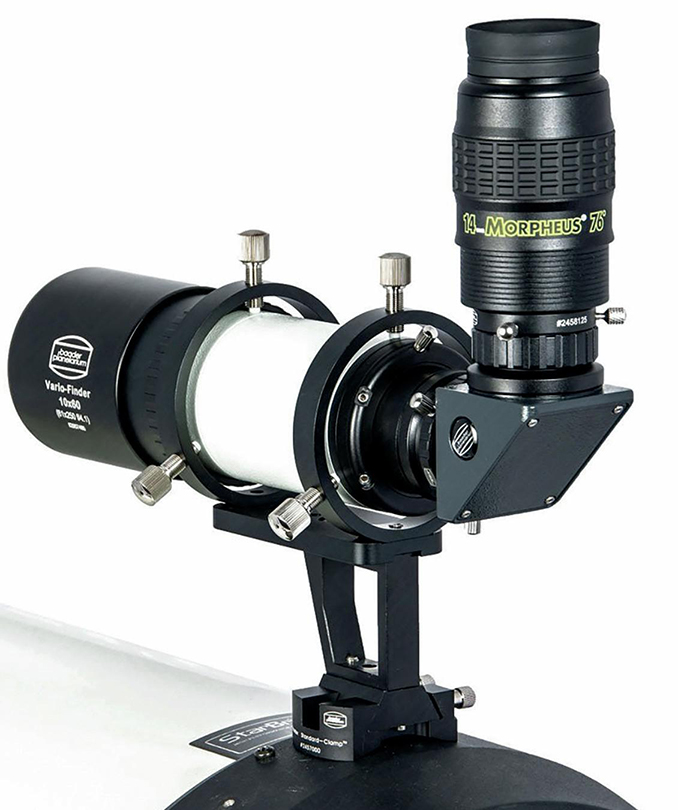
Recommendations for slow telescopes
If you own a long-focus achromatic refractor, classical Cassegrain, Ritchey– Chrétien, Schmidt– or Maksutov–Cassegrain telescope with a focal ratio of f/8 or slower, then you’re in luck: your instrument’s optical system works well with just about any eyepiece, even three-element eyepieces such as the Kellner (not so easy to obtain new these days) and the RKE from Edmund Optics.
Naturally, more expensive eyepiece designs with a greater number of elements deliver the widest apparent fields and work best of all. Since long focal-ratio telescopes are so accommodating, I’ll be more specific for the following small f-ratio instruments – just remember that the characteristics of the following eyepieces apply to you too.
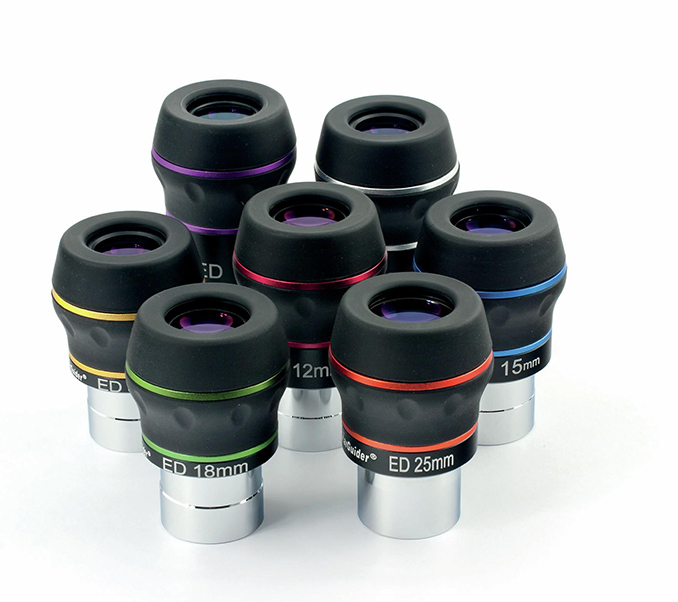
Recommendations for fast telescopes
At the budget end, the Antares Plössls are solid performers that work well down to around f/6, as are the Sky-Watcher SP range. I particularly recommend the 60 degree apparent field BST StarGuider ED eyepieces (sometimes called the Orion Epic II) from Sky’s the Limit, which are excellent value for less than £50 – get them while you can!
Slightly more expensive, but a far better choice for lunar and planetary work, is an Orthoscopic (again, to about f/6) or the Sky- Watcher Planetary UWA 58-degree range, the latter having good eye relief. The aforementioned Edmund Optics RKE range is excellent, as are the William Optics SWANs. If you have to wear glasses, then the new StellaLyra LER range offer particularly long eye relief at an attractive price point.
Moving into the premium-performance eyepieces, particularly if you are looking for good performance over wide apparent fields, then the Tele Vue Panoptic, Baader Hyperion and Morpheus ranges are highly recommended, as are the Antares Speers–Waler Series II and III ranges of eyepieces that can closely match the performance of Tele Vue Naglers down to f/5.
Speaking of premium-performance oculars, if your bank balance can stretch to them, the late versions of Tele Vue 82-degree Naglers and 110-degree Ethos eyepieces should be considered as investments because once you start using them, they can (and will) be used with all your subsequent telescopes. I also consider that the Pentax XW eyepieces offer the best performance-cost ratio.
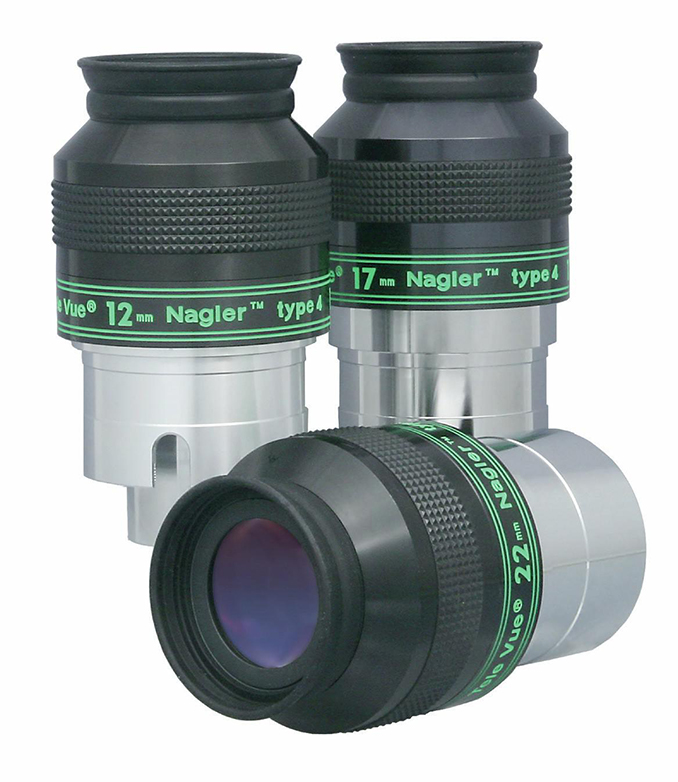
Recommendations for very fast telescopes
If your telescope is really speedy, say f/4, then you will have no option but spend a lot more on your eyepieces to realise the instrument’s full potential with the Tele Vue Naglers/Ethos or Pentax XWs. If you own a Newtonian/Dobsonian and you want the widest low-power views, then you will also need to invest in a coma corrector or a Tele Vue Paracorr to counteract the inherent aberrations of the mirror that manifest themselves at small focal ratios. The coma corrector is placed in the focuser before the eyepiece.
Zoom eyepieces?
A zoom eyepiece operates over a range of focal lengths that you ‘dial in’ by rotating the barrel. Although they might seem an ideal alternative to a set of low, medium and high-power eyepieces that you don’t have to keep swapping in the dark, until recently zooms were considered an optical compromise – and a poor one at that. However, modern seven-element zoom ocular designs with improved multi-coatings have progressed to the stage where they can replace a set of individual oculars, although they do work better with slower telescopes.
The Baader Hyperion Mark IV 8–24mm click-stop zoom and Pentax XL 8–24mm SMC zoom eyepieces are highly regarded for general viewing. For short focal-length instruments or high-power lunar, planetary and double star viewing, the Tele Vue 3–6mm Nagler zoom eyepiece is sublime with a constant 50-degree apparent field. The best of the budget zooms are the Sky-Watcher Hyperflex 9–27mm and Hyperflex 7.2–21.5mm, which deliver a surprisingly good performance for their price, both being seven-element designs.
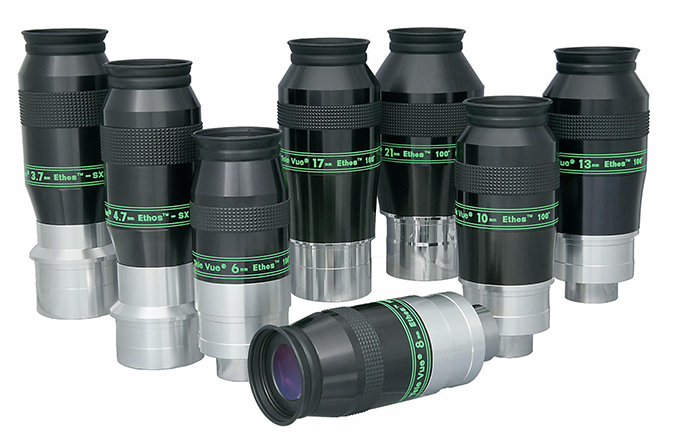
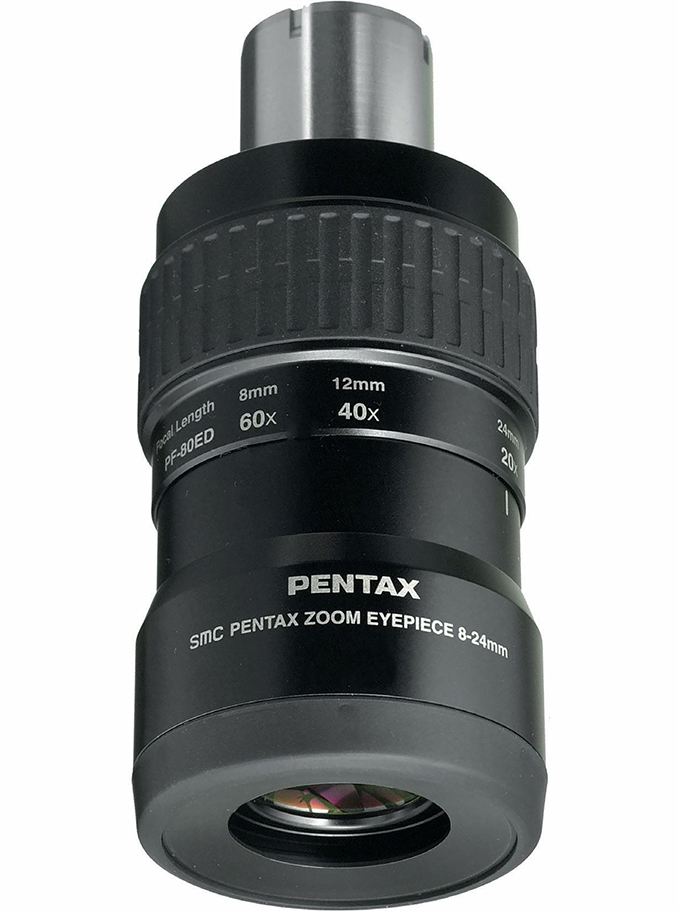
Barlow lens
Although not an eyepiece, a Barlow lens is frequently used with them. Placed in a focuser before an ocular, a typical Barlow effectively doubles the focal length of the telescope (although amplifications up to 5× are encountered) and, therefore, the magnification of any eyepiece behind it. A quality apochromatic Barlow, particularly one possessing an element of ED glass, makes for a very versatile solution when teamed with a quality zoom eyepiece.
Finally, if you wish to try out different eyepiece and telescope combinations in a virtual context, we have our very own interactive ‘Scope Calc’ simulator at the Astronomy Now website. Just point your web browser to astronomynow. com/scope-calc/.

